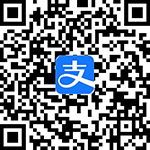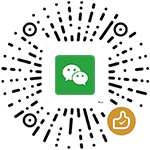
Inteet of Things - Global Technological and Societal Trends from Smart Environments and Spaces to Green Ict (River Publishers Series in Communications)
by: Ovidiu Vermesan (Editor),Peter Friess(Editor)
Publisher: River Publishers
Publication Date: 31 May 2011
Language: English
Print Length: 338 pages
ISBN-10: 879232973X
ISBN-13: 9788792329738
Book Description
The book's aim is to define the Inteet of Things (IoT) in a global view, present the research agenda for Inteet of Things technologies by addressing the new technological developments and providing a global balanced coverage of the challenges and the technical and industrial trends. Energy consumption by the data, communication and networking devices and global CO2 emission is increasing exponentially. ICT has a dual role in this process:it accounts for about two percent of global CO2 emissions and at the same the ICT including IoT technologies and applications have a direct effect on lowering CO2 emissions, increasing energy efficiency, reducing power consumption, and achieving efficient waste recycling. The book builds on the ideas put forward by the European research Cluster on the Inteet of Things Strategic Research Agenda and presents global views and state of the art results on the challenges facing the research, development and deployment of IoT at the global level. IoT together with the other emerging Inteet developments such as Inteet of Energy, Media, People, Services, Business/Enterprises are the backbone of the digital economy, the digital society and the foundation for the future knowledge based economy and innovation society. IoT developments show that we will have 16 billion connected devices by the year 2020 , which will average out to six devices per person on earth and to many more per person in digital societies. Devices like smart phones and machine to machine or thing to thing communication will be the main drivers for further IoT development. The first direct consequence of the IoT is the generation of huge quantities of data, where every physical or virtual object may have a digital twin in the cloud, which could be generating regular updates. The IoT contribution is in the increased value of information created by the number of interconnections among things and the transformation of the processed information into knowledge for the benefit of mankind and society. The Inteet of Things market is connected to industrial machine to machine (M2M) systems, smart meters and enabling technologies such as nanoelectronics, communications, sensors, smart phones, embedded systems, cloud computing and software technologies that will create new products, new services, new interfaces by creating smart environments and smart spaces with applications ranging from smart transport, cities, buildings, energy, grid, to smart health and life. Technical topics discussed in the book include:The Inteet of Things:The Way Ahead Inteet of Things Strategic Research Agenda Challenges of a Sustainable Roadmap for the Inteet of Things Technologies behind Inteet of Things:From Nanoelectronics and Embedded Systems to Cloud Computing and Cognitive Systems Machine to machine (M2M) communication and the emerging Inteet of Things applications The "Inteet of Things" based on IPv6. Paving the way to Smart IPv6 Buildings "Inteet of Things - from Ubiquitous Computing to Ubiquitous Intelligence Applications" Virtualization of network resources and Physical devices in Inteet of Things applications Validation and Interoperability challenges for IoT Mobile devices enable IoT evolution from industrial applications to mass consumer applications Interoperability, Standardisation and Goveance in the era of Inteet of Things (IoT) Technologies, Applications, and Goveance in the Inteet of Things Opportunities, Challenges for Inteet of Things Technologies
About the Author
About the Author Dr. Ovidiu Vermesan holds a PhD in Microelectronics and a Master of Inteational Business (MIB) degree. He is Chief Scientist at SINTEF Digital, Oslo, Norway. His research interests are in the area of smart systems integration, mixed-signal embedded electronics, analogue neural networks, artificial intelligence, and cognitive communication systems. Dr. Vermesan received SINTEF's 2003 award for research excellence for his work on the implementation of a biometric sensor system. He is currently working on projects addressing nanoelectronics, integrated sensor/actuator systems, communication, cyber-physical systems (CPSs) and Industrial Inteet of Things (IIoT), with applications in green mobility, energy, autonomous systems, and smart cities. He has authored or co-authored over 85 technical articles and conference papers. He is actively involved in the activities of the Electronic Components and Systems for European Leadership Joint Undertaking (ECSEL JU) and involved in technical activities to define the priorities for the new European partnership for Key Digital Technologies (KDT). He has coordinated and managed various national, EU and other inteational projects related to smart sensor systems, integrated electronics, electromobility and intelligent autonomous systems such as E3Car, POLLUX, CASTOR, IoE, MIRANDELA, IoF2020, AUTOPILOT, AutoDrive, ArchitectECA2030, AI4DI, AI4CSM. Dr. Vermesan actively participates in national, H2020 EU and other inteational initiatives by coordinating and managing various projects. He is the coordinator of the IoT European Research Cluster (IERC) and a member of the board of the Alliance for Inteet of Things Innovation (AIOTI). He is currently the technical co-coordinator of the Artificial Intelligence for Digitising Industry (AI4DI) project.
 Wow! eBook
Wow! eBook

